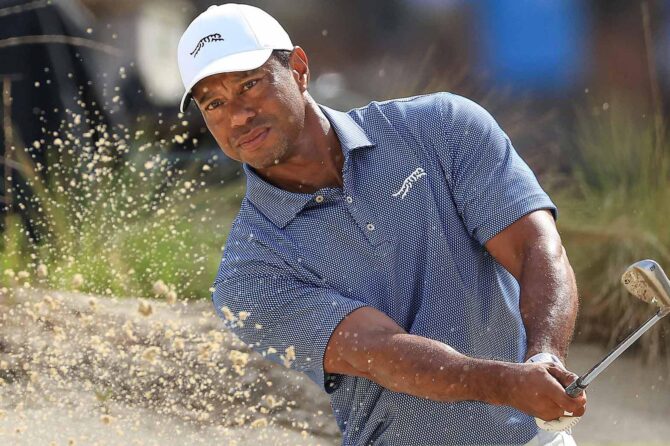Enhancing Golf Performance through Academic Insights
The fusion of academic knowledge with practical training offers a powerful avenue for improving athletic performance. In golf, where both physical skill and mental sharpness are crucial, integrating academic principles can lead to significant advancements. This article examines how concepts from biomechanics, psychology, and strategic planning can be woven into golf training to elevate performance levels. By exploring these elements in depth, golfers can better understand their physical abilities, refine key techniques, and enhance their decision-making skills on the course. The combination of thorough academic research with the specific demands of golf creates a comprehensive training approach that fosters improved results and competitive edge.
Cognitive Learning’s Impact on Golf Performance
In the game of golf, excelling in both physical execution and cognitive understanding is essential for achieving peak performance. Cognitive learning involves not just acquiring knowledge but also honing critical thinking and problem-solving abilities vital for effective gameplay. By leveraging academic insights into cognitive processes, golfers can improve their course management skills, shot selection strategies, and psychological resilience throughout a round.
Key aspects of cognitive learning relevant to golf include:
- Information Analysis: Players develop the ability to assess their environment quickly—identifying obstacles and making informed decisions that enhance response times during play.
- Strategic Planning: A deep understanding of various course layouts enables golfers to devise personalized strategies that capitalize on strengths while addressing weaknesses.
- Mental Fortitude: Techniques rooted in cognitive science help players maintain focus under pressure—turning challenging situations into opportunities for success.
The table below illustrates several cognitive strategies alongside their potential benefits for golfers:
| Cognitive Strategy | Potential Benefits |
|---|---|
| Mental Imagery Techniques | Bolsters confidence by mentally preparing players for successful shots. |
| Self-Reflection Journals | Aids self-awareness by allowing players to evaluate strengths and areas needing improvement. |
By incorporating these cognitive strategies into practice routines, golfers establish a robust foundation for enhanced performance. This holistic approach merges technical proficiency with mental agility—transforming how players interact with the game while enriching overall enjoyment as they pursue golfing excellence throughout life.
Utilizing Biomechanical Principles to Enhance Swing Mechanics
A focus on biomechanical principles is essential when aiming to refine swing techniques in golf. Central to this process is understanding the concept of theKinematic Sequence, which describes how different body segments move during a swing. Optimizing this sequence leads not only to improved timing but also increased clubhead speed—a critical factor in driving distance.
Key considerations include:
- Bodily Stability: Maintaining a solid base during swings ensures efficient energy transfer.
- Lateral Movement Coordination: Proper sequencing between hip rotation and shoulder movement maximizes torque generation.
- Swing Completion Mechanics: Executing follow-through correctly minimizes injury risk while promoting controlled finishes.
Additionally,
Hip Flexor Stretch Hips Enhances flexibility & mobility The use of video analysis tools alongside motion-capture technology provides invaluable feedback regarding swing mechanics; such objective assessments reveal flaws often unnoticed during practice sessions enabling informed adjustments leading potentially lower scores over time! Coaches should integrate these technologies within training frameworks ensuring each golfer refines technique effectively enhancing overall capabilities! Navigating through courses strategically resembles solving an intricate puzzle; developing this skill empowers players’ analytical capabilities regarding layouts determining optimal paths toward holes! Academic disciplines like mathematics or physics significantly contribute towards honing such skills: Understanding geometry aids comprehension concerning angles trajectories guiding shot approaches effectively whereas grasping physics elucidates mechanics governing ball dynamics! Enhancing golf performance requires a well-rounded strategy that integrates physical fitness, nutrition, and mental health. For golfers aiming for longevity and peak performance, adopting a holistic perspective is essential. This article delves into the importance of strength training, flexibility routines, and cardiovascular conditioning in improving swing mechanics, boosting power output, and preventing injuries. It also underscores the vital role of nutrition in energizing athletic endeavors, aiding recovery processes, and mitigating health issues. Furthermore, we will examine how stress management techniques, focus enhancement exercises, and sleep optimization contribute to mental resilience—key components for success on the golf course. To truly unlock one’s potential in golf—and enjoy the game more fully—individuals should embrace an all-encompassing approach to fitness that addresses both physical capabilities and mental acuity. Proper nutrition fuels athletes’ bodies effectively: Golfers can enhance their strategic thinking by engaging with various academic exercises that translate directly onto the course: By analyzing factors like wind conditions or elevation changes holistically—players learn to adapt their strategies dynamically based on situational assessments. Statistical analysis has emerged as an invaluable resource within golf: | Hole Type | Average Score | Best Score | Areas for Improvement | By integrating these analytical principles into practice sessions—golfers cultivate a deeper understanding of course dynamics while refining their strategic approaches toward continuous improvement. Implementing statistical models enables players to monitor progress over time effectively: | Metric | Previous Round (%) | Current Round (%) | Improvement (%) | Regularly reviewing these metrics creates feedback loops that inform training decisions while enhancing skill development—a pathway toward elevating overall game comprehension. Merging physical education with health science lays a robust foundation for comprehensive player development: Understanding body management through health science principles empowers golfers further; studying nutritional needs leads to personalized meal plans designed specifically around energy requirements while ensuring optimal hydration practices are maintained even under competitive pressure conditions. In conclusion: By leveraging academic knowledge, golfers can adopt a revolutionary method to boost their performance on the course. This educational approach involves a thorough grasp of essential techniques, sophisticated strategies, and psychological concepts. With a customized curriculum designed to meet individual requirements, players acquire critical insights into both the physical and mental dimensions of golf. Improved techniques lead to greater accuracy and distance in shots. Additionally, mastering strategic elements enables golfers to confidently tackle challenging course conditions. Understanding the biomechanics and physiology that underpin each swing is crucial for optimizing joint function and muscle strength. This holistic strategy not only sharpens technical skills but also builds mental toughness—an essential trait for peak performance in competitive settings. Incorporating psychological strategies such as visualization practices and stress management techniques can significantly refine a player’s game plan. The incorporation of academic training into golf represents a significant shift in how athletes develop their skills on the green. By exploring theoretical aspects such as biomechanics, psychology, and tactical analysis, players arm themselves with essential tools for improving both technical abilities and overall game strategy. This comprehensive approach fosters an enriched understanding of the sport’s complexities while allowing for personalized training that targets individual strengths and weaknesses. As golfers strive for enhanced performance levels, embracing this academic perspective will not only lead to notable advancements but also deepen their appreciation for golf’s intricate nature. The fusion of scholarly rigor with practical application sets the stage for emerging generations of golfers to reach new heights in excellence while redefining their capabilities on the course. Unlocking Your Golf Potential: Power of Academic Training Discover how academic training can enhance your golf performance. Learn advanced techniques, strategies, and psychological insights to elevate your game! Academic training can significantly influence a golfer’s performance by merging skills development with theoretical knowledge. By delving into the mechanics of the swing, mental strategies, and performance analytics, golfers can train their minds as rigorously as their bodies. – Grip and Stance: Understanding the fundamental grip, stance, and posture to create a solid foundation for every swing. – Swing Mechanics: Studying the physics behind an effective golf swing to increase accuracy and power. – Course Management: Learning how to assess course layout and adapt play style accordingly. – Shot Selection: Understanding when to take risks and when to play conservatively. – Mental Toughness: Building resilience to handle pressure and maintain focus during competitions. – Visualization Techniques: Employing mental imagery to enhance performance and build confidence. – Participate in specialized workshops that cover biomechanics, swing analysis, and mental conditioning. – Platforms like Udemy or Coursera offer courses on sports performance and psychology tailored for athletes. A 15-year-old golfer struggling with confidence attended a series of workshops on sports psychology. By applying visualization techniques and mental rehearsal, their performance in competitions improved dramatically, resulting in a 15% increase in their average scoring. A well-known professional golfer spent a year focusing on biomechanics and swing analysis after suffering a serious injury. By understanding the underlying mechanics of their swing, they were able to return to the tour with renewed strength and a more powerful, efficient swing, leading to two tournament wins in the next season. | Component | Description | Benefits | |———————–|—————————————————–|—————————–| | Swing Analysis | Understanding swing dynamics through physics | Improved accuracy and distance | | Mental Conditioning | Strategies for maintaining focus and composure | Enhanced performance under pressure | | Biomechanics Study | In-depth knowledge of body mechanics in golf | Injury prevention and performance optimization | | Course Strategy | Assessment of course layouts and planning shots | Better decision-making on the course | Successful golfers understand that physical fitness is a staple of their training regimen. Incorporate the following: Many professional golfers utilize visualization as part of their training. For example, a renowned golfer has spoken about how consistently picturing their shot path has contributed to their success on the greens. By embracing the academic approach to golf improvement, players can unlock their full potential. Through a combination of theory, technology, and practical applications, golfers can refine their skills, develop a robust mental game, and maximize their performance on the course. Academic training is not just an enhancement—it’s a game-changer for those looking to elevate their golf experience. Protecting your growth as a golfer means continuous learning and adaptation. Integrate academic training into your regimen, and witness the transformation in your performance and overall enjoyment of the game!
Exercise Name
Targeted Muscle Group
Advantages
Plank
Core < td >Boosts stability & posture < tr >< td >Medicine Ball Twists < td >Core & Shoulders < td >Improves rotational strength .
Cultivating Strategic Thinking Skills for Course Navigation
The Comprehensive Approach to Elevating Golf Performance: A Holistic Fitness Strategy
Embracing a Holistic Fitness Framework
Physical Conditioning: The Cornerstone of Performance
Nutritional Strategies for Optimal Performance
Mental Fortitude Through Strategic Insights
Leveraging Data Analysis for Informed Decisions
Example Performance Metrics Table
|———–|—————|————|———————–|
| Par 3 | 3.5 | 2 | Putting accuracy |
| Par 4 | 4.2 | 3 | Approach shots |
| Par 5 | 5.6 | 4 | Driving distance |Tracking Progress with Statistical Models
Example Progress Tracking Table
|—————————-|———————-|———————-|————————-|
| Fairways Hit | 62 | 72 |-10 |
| Greens in Regulation |50 ||55 |-5 |
||30 ||28 |-2 |Integrative Approaches Combining Education & Health Science
Adopting this holistic approach not only maximizes enjoyment but also fosters sustained healthy lifestyles both on-and-off-course! By addressing every aspect—from physical fitness through nutritional awareness down-to mental resilience—golfers position themselves favorably towards achieving excellence within this beloved sport!Enhancing Golf Performance through Academic Insights
The Importance of Technique and Strategy
Mental Resilience: A Key Component
Looking Ahead: The Future of Golf Training

Unlocking Your Golf Potential: The Power of Academic Training in Performance Enhancement
Meta Title
Meta Description
Understanding the Role of Academic Training in Golf
Why Academic Training is Essential for Golfers
Key Areas of Focus in Academic Training
Benefits of Integrating Academic Concepts
Practical Tips for Academic Enhancement in Golf
Focus on Education and Continuous Learning
Implement Technology in Training
Foster a Collaborative Learning Environment
Case Studies: Success Stories Through Academic Training
Case Study 1: Junior Golfer Transformation
Case Study 2: Professional Player’s Comeback
Key Techniques: The Academic Framework for Golfers
Table: Core Academic Components for Golf Training
Incorporating Fitness and Conditioning
The Power of Visualization in Golf Performance
Techniques for Effective Visualization
Anecdotal Evidence: Visualization in Action
Conclusion: Integrating Academic Training for Optimal Performance





